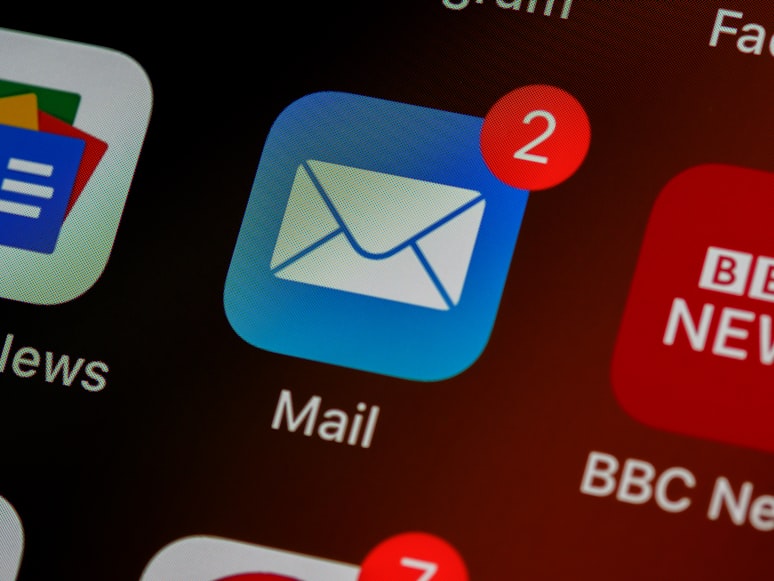
In this day and age, newsletters are a dime a dozen. You can find them for pretty much any topic or niche you can imagine, and they can be a great way to keep up with what’s going on in your industry or interests. But did you know that newsletters can also be a great way to increase engagement on your site?
That’s right! By sending newsletters to your site’s visitors, you can encourage them to come back more often, interact with your content more, and even share it with their friends.
To learn how to create your own newsletter and maximize the benefits of this valuable digital marketing tool, check out the information below.
Newsletter Marketing
Before we get into the nitty-gritty of newsletter generation, let’s establish a baseline understanding of what newsletters are and how they can help you achieve your marketing goals.
Simply, newsletters are regularly scheduled emails containing updates, information, or promotions related to a brand, company, or organization.
They can be sent to subscribers daily, weekly, or monthly (or even less frequently). They are an excellent way to keep your audience informed about your brand or business and drive traffic back to your website (more on that below).
This two-pronged approach is why newsletters are such a valuable tool in any digital marketing arsenal. You can use them to disseminate any information you want to share with your audience and prompt customer action at the same time.
How Newsletters Increase Engagement
There are multiple ways newsletters can help increase engagement on your site. Here are some of the most effective methods:
1. Newsletters drive traffic back to your website
Newsletters help increase the number of visitors to your webpage. You can add a call-to-action (CTA) that encourages recipients to click through to your site to learn more about what you’re offering.
And, since newsletters are sent on a regular basis, this can quickly turn into a steady stream of traffic coming to your site from your newsletter subscribers. If they’re interested in the content you’re sending them, they’re more likely to return to your site, again and again, to see what’s new.
2. Newsletters prompt customers to take action
You can also use a newsletter to highlight specific products, services, or promotions they might be interested in and provide links to these offerings to cut the steps consumers need to take to find them on your site, and therefore encourage conversions by easing the customer’s journey.
3. Newsletters encourage sharing
An email newsletter is easy to share with others, which means your subscribers can help increase the reach of your content simply by forwarding your newsletter to a friend or colleague.
This is especially valuable if you have time-sensitive offers or promotions in your newsletters that you want as many people as possible to see.
4. Newsletters create a sense of community
When done right, newsletters can help create a sense of community and loyalty among your customer base. If they enjoy reading your newsletters and feel like they’re getting valuable information from them, they’re more likely to remain engaged with your brand.
This is why it’s crucial to ensure that your newsletters are well-written, informative, and relevant to your audience. You want them to look forward to receiving your newsletters, not dread them.
5. Newsletters can improve Search Engine Optimization (SEO)
With engaging content, you can keep your current subscriber base interested in your newsletters and attract new subscribers. This can do wonders for your SEO since the more people read and share your newsletters, the more your brand reputation will grow.
This increased brand awareness will lead to more benefits, such as more organic searches and website visitors who will read, share, and link to your website content. All of which can increase your SEO rankings over time.
Tips for Creating Newsletters That Engage

Good content is the foundation of any good newsletter. You can only engage your subscribers and encourage them to interact with your site if you provide them with valuable information they’re interested in reading.
Here are some tips for creating newsletters that engage:
1. Keep your newsletters focused, short, and sweet.
With so much content available online, it can be tempting to try and pack as much information into your newsletters as possible. But this is usually a mistake.
It’s better to focus on one specific topic per newsletter and flesh it out rather than try to cover many different issues in a cursory way. This will make your newsletters more enjoyable to read and more likely to be read in their entirety.
2. Write in a clear, concise, and easy-to-read style.
Your newsletters should be well-written and free of any errors. But beyond that, they should also be easy to read. This means using short sentences and paragraphs and avoiding jargon or overly technical language.
Your goal should be to make your newsletters as easy to read and understand as possible so that even someone unfamiliar with your brand or industry can follow along.
3. Use strong headlines and visuals.
People receive several emails daily, so you want yours to stand out. Make sure your newsletter has a strong headline that accurately reflects the content inside so that people will know what they’re getting if they open it.
Moreover, newsletters with visuals are more likely to be read than those without. So try to include images or graphics along with your text. Visuals can be especially beneficial in newsletters focused on data or statistics since they can help make the information more digestible and easy to understand.
4. Include a mix of content types.
Newsletters that are nothing but one long block of text are hardly likely to appeal to anyone. To keep your readers interested, mix up the content types in your newsletters. Include images, infographics, videos, lists, and quizzes or polls.
The key is to keep your newsletters varied and interesting so that people will want to read them. You can do just that by including a mix of content types.
5. Design your newsletters well.
In relation to the last tip, you want to make sure your newsletters are designed in a way that is visually appealing and easy to navigate.
Your newsletters should have a consistent layout and design, with a clear hierarchy of information. The most important information should be featured prominently, while less important details can be included below or in a sidebar.
You also want to ensure your newsletters are mobile-friendly since more and more people are reading emails on their smartphones. This means using a responsive design and keeping the overall layout simple and easy to scroll through on a small screen.
6. Offer something of value.
Your newsletters should offer your subscribers something of value if you want them to be engaged with your brand. This could be anything from a discount code or coupon to exclusive access to content or insider information.
Whatever it is, make sure it’s something that your target audience would find valuable. This will make them more likely to open and read your newsletters and even share them with others.
7. Use calls to action.
Your newsletters should always include some sort of (CTA). This could be as simple as asking people to visit your website or follow you on social media, or something more specific, like signing up for a contest or taking a survey.
You must include a CTA in every newsletter, so people know the next step. If you don’t, they may be unsure of what to do and end up deleting your email.
A Step-by-Step Guide to Creating Newsletters

Creating a newsletter is easier now, thanks to online newsletter creators that let you design newsletters with drag-and-drop simplicity. Of course, you’ll first need to build a subscriber list. You can do this by adding a sign-up form to your website or blog or requesting your customers’ information (and consent) at business events.
Once you have a list of subscribers, you’re ready to create your newsletters. Here’s a step-by-step guide to help you get started:
1. Select an online newsletter service.
There are several online newsletter services available, such as Benchmark Email, MailChimp, and Constant Contact. Select one that fits your budget and offers the features you need.
2. Choose a template.
Most newsletter creators will offer a variety of templates that you can choose from. Pick one that matches your brand’s aesthetic, and start customizing it to fit your needs.
3. Add your content.
Once you’ve chosen a template, it’s time to start adding your content. This will usually involve dragging and dropping different elements into place.
If you include images, be sure to use high-resolution photos so that they look good when people are viewing your newsletters on their screens.
4. Send a test email.
Before you send your newsletters out to your entire list, it’s always a good idea to send a test email first. This will let you see how the newsletters look and check for spelling or grammatical errors.
5. Hit send or schedule your newsletter’s release.
When you’re ready to send your newsletters, simply hit the “send” button. If you want to schedule them for a later date, most newsletter creators will also let you do that. And that’s it!
Design a Newsletter for Your Site Today
Newsletters are a great way to increase engagement on your website. You can use them to keep people updated on the latest news, share helpful information, offer exclusive deals and discounts—and encourage them to follow through by highlighting the information they need and simplifying the consumer journey.
Just remember to present your information the right way. Keep your newsletter content eye-catching, engaging, and easy to read, and soon enough, you’ll be watching your site’s engagement rates soar.
